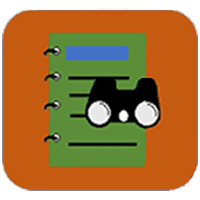Monitoring
View article.
This study tested four flight frequencies during the growing season. Classification accuracy based on reference data increased by 5–10% between a single flight and scenarios including all conducted flights. Accuracy increased from 50.6% to 61.4% at the drier site, while at the more mesic/densely vegetated site, we found an increase of 59.0% to 64.4% between a single and multiple flights over the growing season. Peak green-up varied by 2–4 weeks within the scenes, and sparse vegetation classes had only a short detectable window of active photosynthesis; therefore, a single flight could not capture all vegetation that was active across the growing season. The multi-temporal analyses identified differences in the seasonal timing of green-up and senescence within herbaceous and sagebrush classes. Multiple UAV measurements can identify the fine-scale phenological variability in complex mixed grass/shrub vegetation.
View guidebook.
This guidebook is to help the rancher and/or land manager use business planning and ecological monitoring to ensure the ranch or land is managed in a sustainable manner.
Webinar recording.
Presented by: Sean Healey and Zhiqiang Yang
Forest managers increasingly require statistically grounded estimates of forest carbon storage at the resolution of individual ownerships (a few thousand acres). Carbon offset markets and general recognition of climate change mitigation as an ecosystem service provide incentive for monitoring carbon, but stand exams are costly, and varying methods may reduce comparability across ownerships. NASA’s GEDI mission provides high-quality lidar data across the country, and the Forest Service’s OBIWAN tool (Online Biomass Inference using Waveforms and iNventory) allows owners to generate and document GEDI-based estimates of mean carbon storage for their own land.
Webinar recording.
Presented by: Matt Reeves
Estimating the number of animals that can be sustainably supported depends on numerous factors such as forage quantities, terrain, distance from water, and the type of vegetation being considered. Historically most approaches to conducting capacity estimates were limited by a paucity of spatially explicit data describing these factors. However, recent advances in remotely sensed data products and modelling ideas have improved our ability to refine these estimates and do it consistently across all lands which has significant implications for future land management plans such as Allotment Management Plans and Annual Operating Instructions (AOI) for federally managed grazing allotments. In this presentation we demonstrate application of our modernized modelling approach and present results of our recent assessment of wild horse and burro capacity in California.
Webinar recording.
Presented by: Crystal Stonesifer
Aircraft are important fire management tools, but their use can bring substantial costs and associated risks. We developed the Aviation Use Summary (AUS), which is a decision support framework to help track the location, timing, and amount of aircraft use in fire suppression; this information is presented in a way that helps guide decision makers through a structured risk assessment and a repeatable check-in process. Extensive use in large fire support has demonstrated the effectiveness of the framework, related limitations, and potential for future improvements and broad adoption in fire management.
View article.
Invasive forb and grass species are likely to expand their ranges and continued increases in temperature, aridity and area burned will increase invasion risk. Monitoring species presence and absence and mapping known and potential ranges with a focus on presence detection, as in our methodology, will aid in identifying new invasions and prioritizing prevention and control.
View article.
We first analyzed interannual trends in six phenological measures as a baseline. We then demonstrated how including annual-resolution predictors can provide more nuanced insights into measures of phenology between plant communities and across the ecoregion. Across the study area, higher annual precipitation increased both peak and season-long productivity. In contrast, higher mean annual temperatures tended to increase peak productivity but for the majority of the study area decreased season-long productivity. Annual precipitation and temperature had strong explanatory power for productivity-related phenology measures but predicted date-based measures poorly. We found that relationships between climate and phenology varied across the region and among plant communities and that factors such as recovery from disturbance and anthropogenic management also contributed in certain regions. In sum, phenological measures did not respond ubiquitously nor covary in their responses. Nonclimatic dynamics can decouple phenology from climate; therefore, analyses including only interannual trends should not assume climate alone drives patterns.
View article.
Across practice types, ≥99% of fields had no evidence of rills, gullies, or pedestaling from erosion, and 91% of fields had <20% bare soil cover, with region being the strongest predictor of bare soil cover. Seventy-nine percent of fields had ≥50% grass cover, with cover differing by practice type and region. Native grass species were present on more fields in wildlife and wetland practices compared to grassland practices. Forb cover >50% and native forb presence occurred most frequently in wildlife practices, with region being the strongest driver of differences. Federally listed noxious grass and forb species occurred on 23% and 61% of fields, respectively, but tended to constitute a small portion of cover in the field. Estimates from edge-of-field surveys and in-field validation sampling were strongly correlated, demonstrating the utility of the edge-of-field surveys. Our results provide the first national-level assessment of CRP establishment in three decades, confirming that enrolled wildlife and wetland practices often have diverse perennial vegetation cover and very few erosional features.
Access the MRLC Rangeland Viewer.
View article.
Highlights:
- Automated and repeatable method to improve scientific integrity of long-term data
- Analyzed long-term data to improve monitoring policies and efforts
- Increased collaborations between federal and state agencies to improve data quality
- Recommendations for managing existing and new long-term monitoring data
- Spatiotemporal heatmap video of Greater sage-grouse counts across North American





